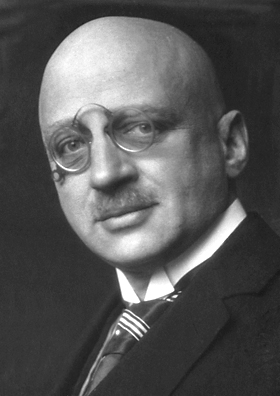|
Connections (British TV Series)
''Connections'' is a science education television series created, written, and presented by British science historian James Burke. The series was produced and directed by Mick Jackson of the BBC Science and Features Department and first aired in 1978 (UK) and 1979 (US). It took an interdisciplinary approach to the history of science and invention, and demonstrated how various discoveries, scientific achievements, and historical world events were built from one another successively in an interconnected way to bring about particular aspects of modern technology. The series was noted for Burke's crisp and enthusiastic presentation (and dry humour), historical re-enactments, and intricate working models. The popular success of the series led to the production of ''The Day the Universe Changed'' (1985), a similar program, but showing a more linear history of several important scientific developments. Years later, the success in syndication led to three sequels. ''Connections2'' ... [...More Info...] [...Related Items...] OR: [Wikipedia] [Google] [Baidu] |
Haber-Bosch Process
The Haber process, also called the Haber–Bosch process, is an artificial nitrogen fixation process and is the main industrial procedure for the production of ammonia today. It is named after its inventors, the German chemists Fritz Haber and Carl Bosch, who developed it in the first decade of the 20th century. The process converts atmospheric nitrogen (N2) to ammonia (NH3) by a reaction with hydrogen (H2) using a metal catalyst under high temperatures and pressures: : \ce \quad \Delta H^\circ = -91.8~\text Though this reaction is exothermic (i.e. it releases energy, albeit not very much), it results in a decrease in entropy, which is the central reason why it is very challenging to carry out. Before the development of the Haber process, it had been difficult to produce ammonia on an industrial scale, with early methods, such as the Birkeland–Eyde process and the Frank–Caro process, all highly inefficient. During World War I, the Haber process provided Germany with a s ... [...More Info...] [...Related Items...] OR: [Wikipedia] [Google] [Baidu] |
Pike Square
The pike square (German: ''Gevierthaufen'', lit. 'square crowd', or ''Gewalthaufen'' lit. 'crowd of force') was a military tactical formation in which 10 rows of men in 10 columns wielding pikes, was developed by the Swiss Confederacy during the 14th century for use by its infantry. History The pike square was used to devastating effect at the Battle of Nancy against Charles the Bold of Burgundy in 1477, when the Swiss defeated a smaller but more powerful armored cavalry force. The battle is generally seen as one of the turning points that established the infantry as the primary fighting arm in European warfare from the 16th century onwards. The Burgundian compagnie d'ordonnance was a formidable combined arms force relying on close cooperation between heavily armored knights, dismounted men-at-arms, a variety of ranged troops including archers and crossbowmen, and an early form of field artillery. It was one of the most feared and most effective ground forces in 15th-century ... [...More Info...] [...Related Items...] OR: [Wikipedia] [Google] [Baidu] |
Northeast Blackout Of 1965
The northeast blackout of 1965 was a significant disruption in the supply of electricity on Tuesday, November 9, 1965, affecting parts of Ontario in Canada and Connecticut, Delaware, Maryland, Massachusetts, New Hampshire, New Jersey, New York, Pennsylvania, Rhode Island, and Vermont in the United States. Over 30 million people and 80,000 square miles (207,000 km2) were left without electricity for up to 13 hours. Cause The cause of the failure was the setting of a protective relay on one of the transmission lines from the Sir Adam Beck Hydroelectric Power Station No. 2 in Queenston, Ontario, near Niagara Falls. The safety relay was set to trip if other protective equipment deeper within the Ontario Hydro system failed to operate properly. On a particularly cold November evening, power demands for heating, lighting, and cooking were pushing the electrical system to near its peak capacity. Transmission lines heading into southern Ontario were heavily load ... [...More Info...] [...Related Items...] OR: [Wikipedia] [Google] [Baidu] |
Television Documentary
Television documentaries are televised media productions that screen documentaries. Television documentaries exist either as a television documentary series or as a television documentary film. *Television documentary series, sometimes called docuseries, are television series screened within an ordered collection of two or more televised episodes. *Television documentary films exist as a singular documentary film to be broadcast via a documentary channel or a news-related channel. Occasionally, documentary films that were initially intended for televised broadcasting may be screened in a cinema. Documentary television rose to prominence during the 1940s, spawning from earlier cinematic documentary filmmaking ventures. Early production techniques were highly inefficient compared to modern recording methods. Early television documentaries typically featured historical, wartime, investigative or event-related subject matter. Contemporary television documentaries have extended to ... [...More Info...] [...Related Items...] OR: [Wikipedia] [Google] [Baidu] |
Stem Cell
In multicellular organisms, stem cells are undifferentiated or partially differentiated cells that can differentiate into various types of cells and proliferate indefinitely to produce more of the same stem cell. They are the earliest type of cell in a cell lineage. They are found in both embryonic and adult organisms, but they have slightly different properties in each. They are usually distinguished from progenitor cells, which cannot divide indefinitely, and precursor or blast cells, which are usually committed to differentiating into one cell type. In mammals, roughly 50–150 cells make up the inner cell mass during the blastocyst stage of embryonic development, around days 5–14. These have stem-cell capability. ''In vivo'', they eventually differentiate into all of the body's cell types (making them pluripotent). This process starts with the differentiation into the three germ layers – the ectoderm, mesoderm and endoderm – at the gastrulation stage. However ... [...More Info...] [...Related Items...] OR: [Wikipedia] [Google] [Baidu] |
Nuclear Power
Nuclear power is the use of nuclear reactions to produce electricity. Nuclear power can be obtained from nuclear fission, nuclear decay and nuclear fusion reactions. Presently, the vast majority of electricity from nuclear power is produced by nuclear ''fission'' of uranium and plutonium in nuclear power plants. Nuclear ''decay'' processes are used in niche applications such as radioisotope thermoelectric generators in some space probes such as ''Voyager 2''. Generating electricity from fusion power, ''fusion'' power remains the focus of international research. Most nuclear power plants use thermal reactors with enriched uranium in a Nuclear fuel cycle#Once-through nuclear fuel cycle, once-through fuel cycle. Fuel is removed when the percentage of neutron poison, neutron absorbing atoms becomes so large that a nuclear chain reaction, chain reaction can no longer be sustained, typically three years. It is then cooled for several years in on-site spent fuel pools before being tr ... [...More Info...] [...Related Items...] OR: [Wikipedia] [Google] [Baidu] |
Future Shock
''Future Shock'' is a 1970 book by American futurist Alvin Toffler, written together with his spouse Adelaide Farrell, in which the authors define the term "future shock" as a certain psychological state of individuals and entire societies. The shortest definition for the term in the book is a personal perception of "too much change in too short a period of time". The book, which became an international bestseller, has sold over 6 million copies and has been widely translated. Development The book grew out of an article "The Future as a Way of Life" in ''Horizon'' magazine, Summer 1965 issue. Major themes Future shock Alvin Toffler argued that society is undergoing an enormous structural change, a revolution from an industrial society to a " super-industrial society". This change overwhelms people. He argues that the accelerated rate of technological and social change leaves people disconnected and suffering from "shattering stress and disorientation"—future shocked. To ... [...More Info...] [...Related Items...] OR: [Wikipedia] [Google] [Baidu] |
Corollary
In mathematics and logic, a corollary ( , ) is a theorem of less importance which can be readily deduced from a previous, more notable statement. A corollary could, for instance, be a proposition which is incidentally proved while proving another proposition; it might also be used more casually to refer to something which naturally or incidentally accompanies something else (e.g., violence as a corollary of revolutionary social changes). Overview In mathematics, a corollary is a theorem connected by a short proof to an existing theorem. The use of the term ''corollary'', rather than ''proposition'' or ''theorem'', is intrinsically subjective. More formally, proposition ''B'' is a corollary of proposition ''A'', if ''B'' can be readily deduced from ''A'' or is self-evident from its proof. In many cases, a corollary corresponds to a special case of a larger theorem, which makes the theorem easier to use and apply, even though its importance is generally considered to be secondary t ... [...More Info...] [...Related Items...] OR: [Wikipedia] [Google] [Baidu] |
Cargo Ship
A cargo ship or freighter is a merchant ship that carries cargo, goods, and materials from one port to another. Thousands of cargo carriers ply the world's seas and oceans each year, handling the bulk of international trade. Cargo ships are usually specially designed for the task, often being equipped with crane (machine), cranes and other mechanisms to load and unload, and come in all sizes. Today, they are almost always built of welded steel, and with some exceptions generally have a life expectancy of 25 to 30 years before being scrapped. Definitions The words ''cargo'' and ''freight'' have become interchangeable in casual usage. Technically, "cargo" refers to the goods carried aboard the ship for hire, while "freight" refers to the act of carrying of such cargo, but the terms have been used interchangeably for centuries. Generally, the modern ocean shipping business is divided into two classes: # Liner business: typically (but not exclusively) container vessels (where ... [...More Info...] [...Related Items...] OR: [Wikipedia] [Google] [Baidu] |
Fluyt
A fluyt (archaic Dutch: ''fluijt'' "flute"; ) is a Dutch type of sailing vessel originally designed by the shipwrights of Hoorn as a dedicated cargo vessel. Originating in the Dutch Republic in the 16th century, the vessel was designed to facilitate transoceanic delivery with the maximum of space and crew efficiency. Unlike rivals, it was not built for conversion in wartime to a warship, so it was cheaper to build and carried twice the cargo, and could be handled by a smaller crew. Construction by specialized shipyards using new tools made it half the cost of rival ships. These factors combined to sharply lower the cost of transportation for Dutch merchants, giving them a major competitive advantage. The fluyt was a significant factor in the 17th-century rise of the Dutch seaborne empire. In 1670 the Dutch merchant marine totalled 568,000 tons of shipping—about half the European total. Ship design The standard fluyt design minimized or completely eliminated its armaments to max ... [...More Info...] [...Related Items...] OR: [Wikipedia] [Google] [Baidu] |
Middle Ages
In the history of Europe, the Middle Ages or medieval period lasted approximately from the late 5th to the late 15th centuries, similar to the post-classical period of global history. It began with the fall of the Western Roman Empire and transitioned into the Renaissance and the Age of Discovery. The Middle Ages is the middle period of the three traditional divisions of Western history: classical antiquity, the medieval period, and the modern period. The medieval period is itself subdivided into the Early, High, and Late Middle Ages. Population decline, counterurbanisation, the collapse of centralized authority, invasions, and mass migrations of tribes, which had begun in late antiquity, continued into the Early Middle Ages. The large-scale movements of the Migration Period, including various Germanic peoples, formed new kingdoms in what remained of the Western Roman Empire. In the 7th century, North Africa and the Middle East—most recently part of the Eastern Ro ... [...More Info...] [...Related Items...] OR: [Wikipedia] [Google] [Baidu] |







.jpg)
